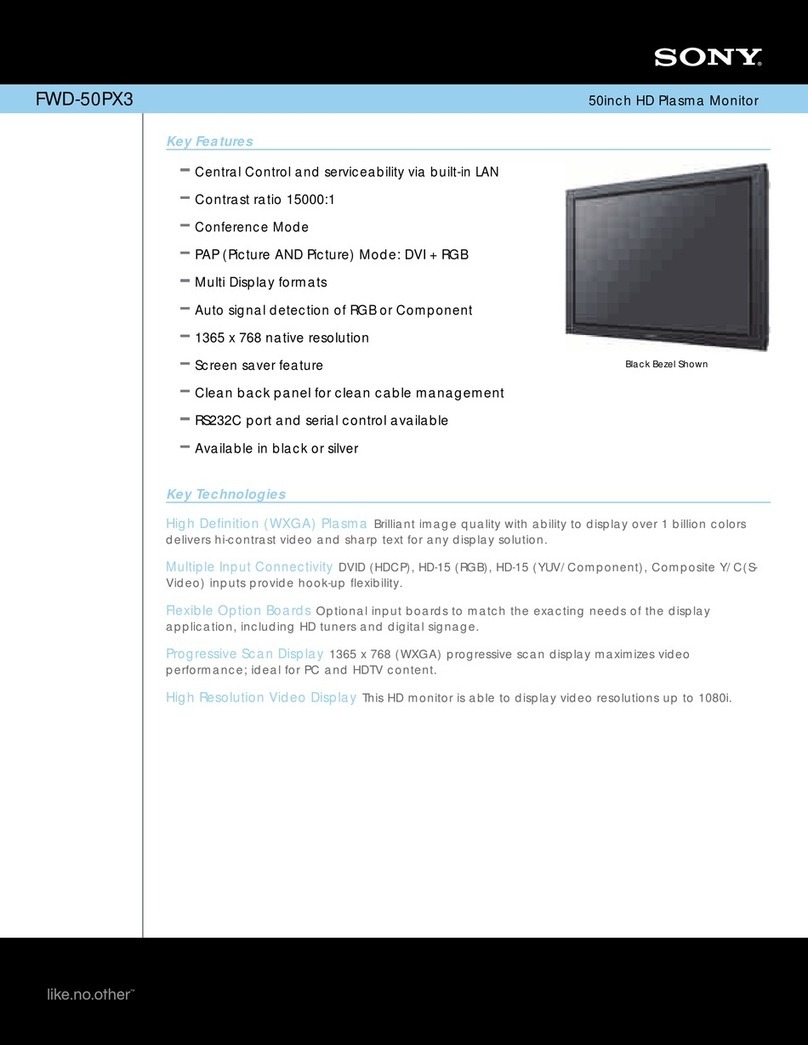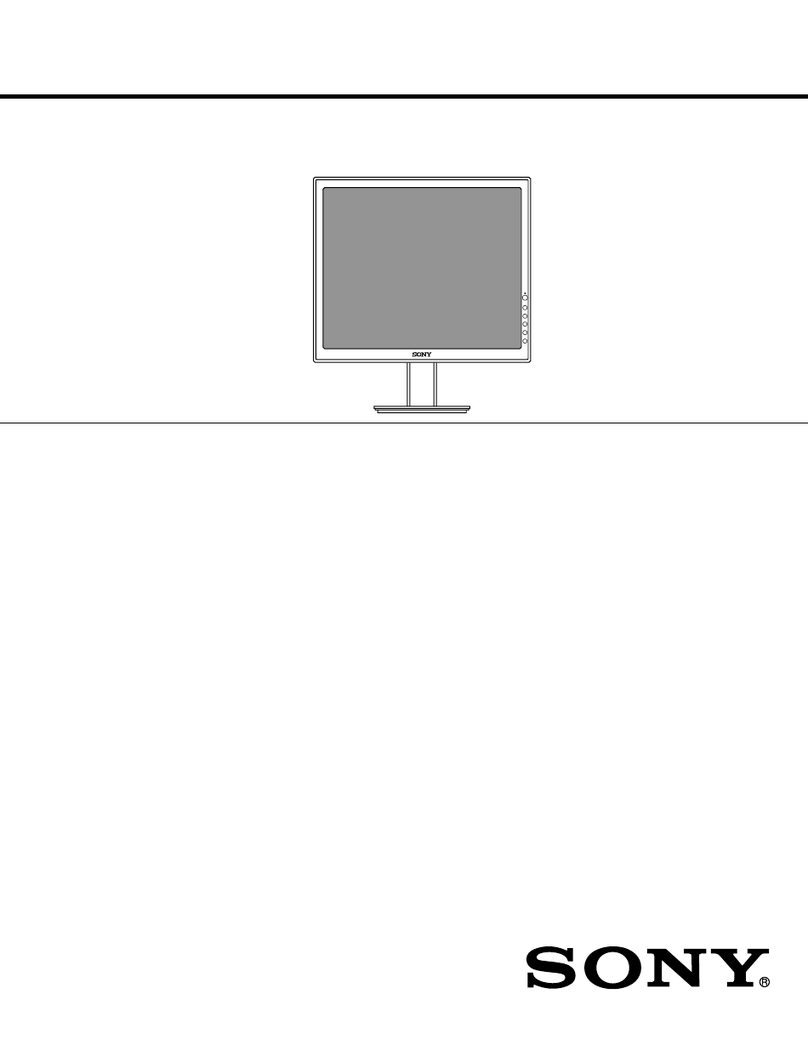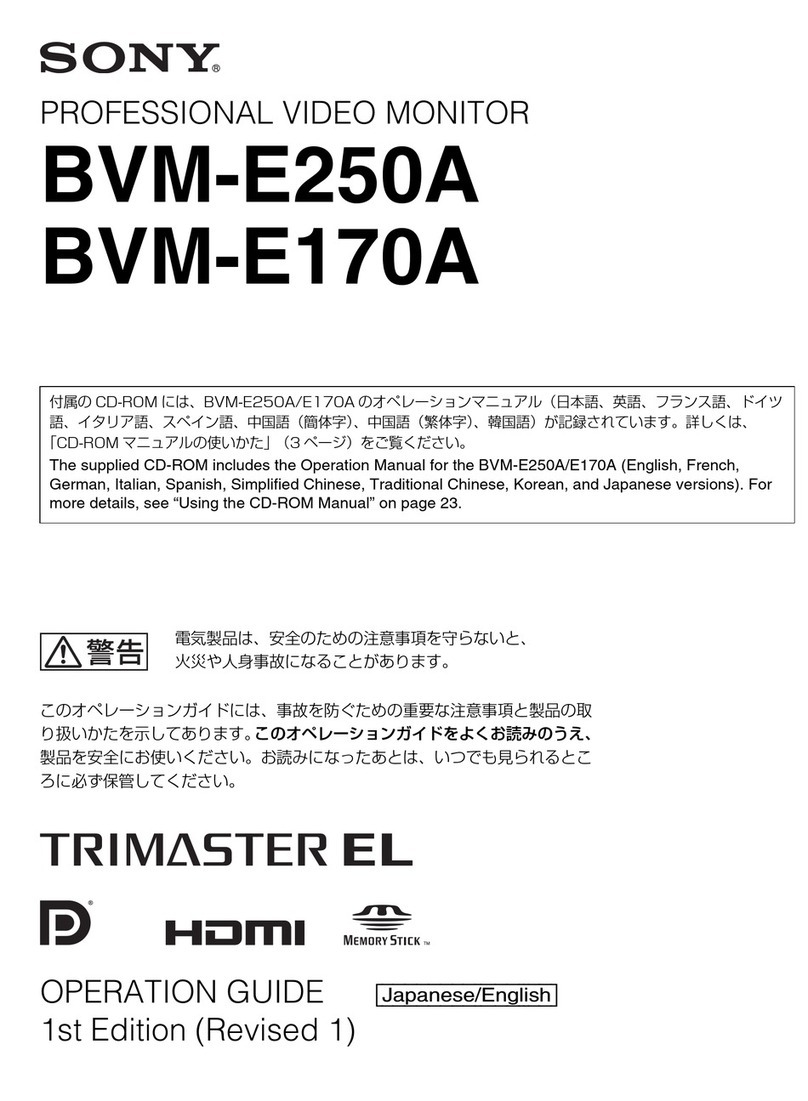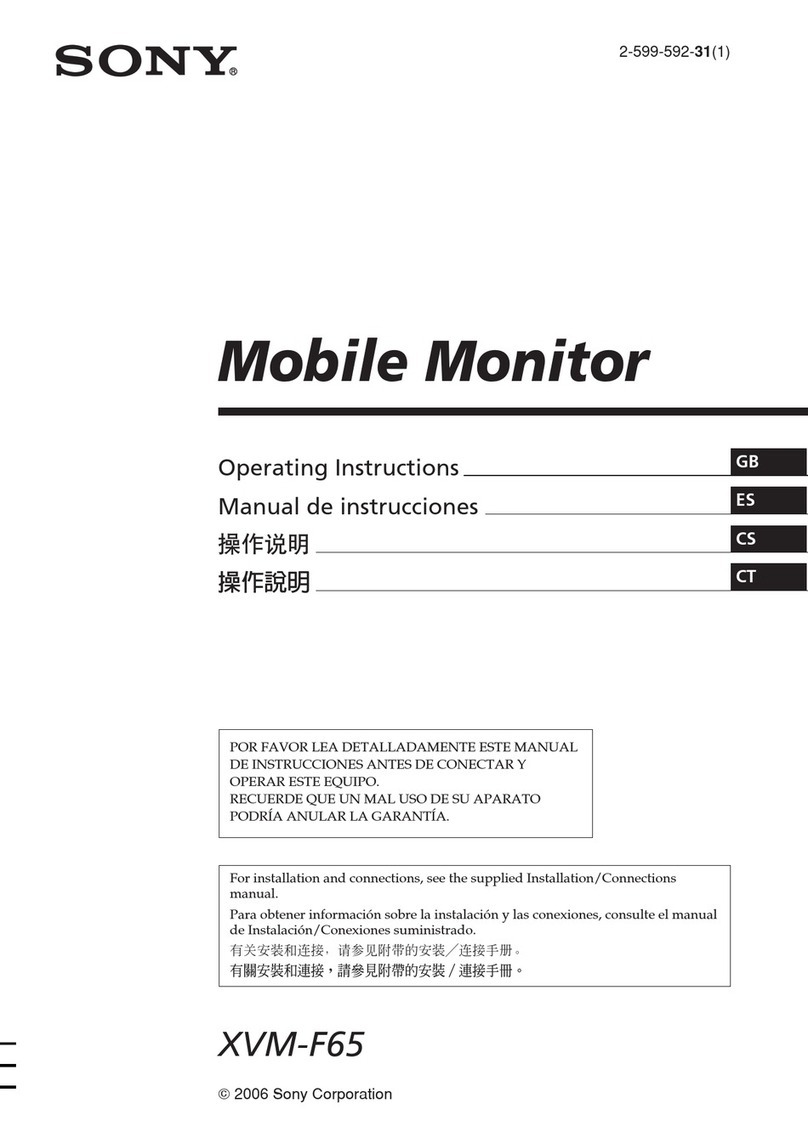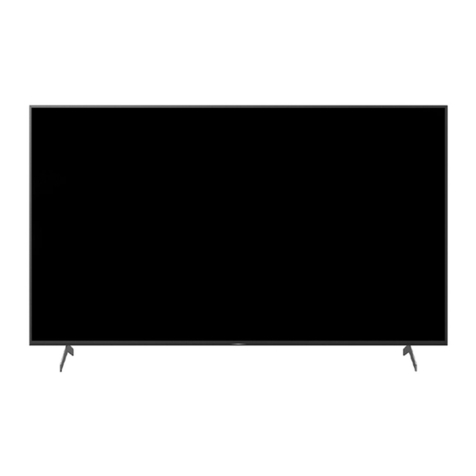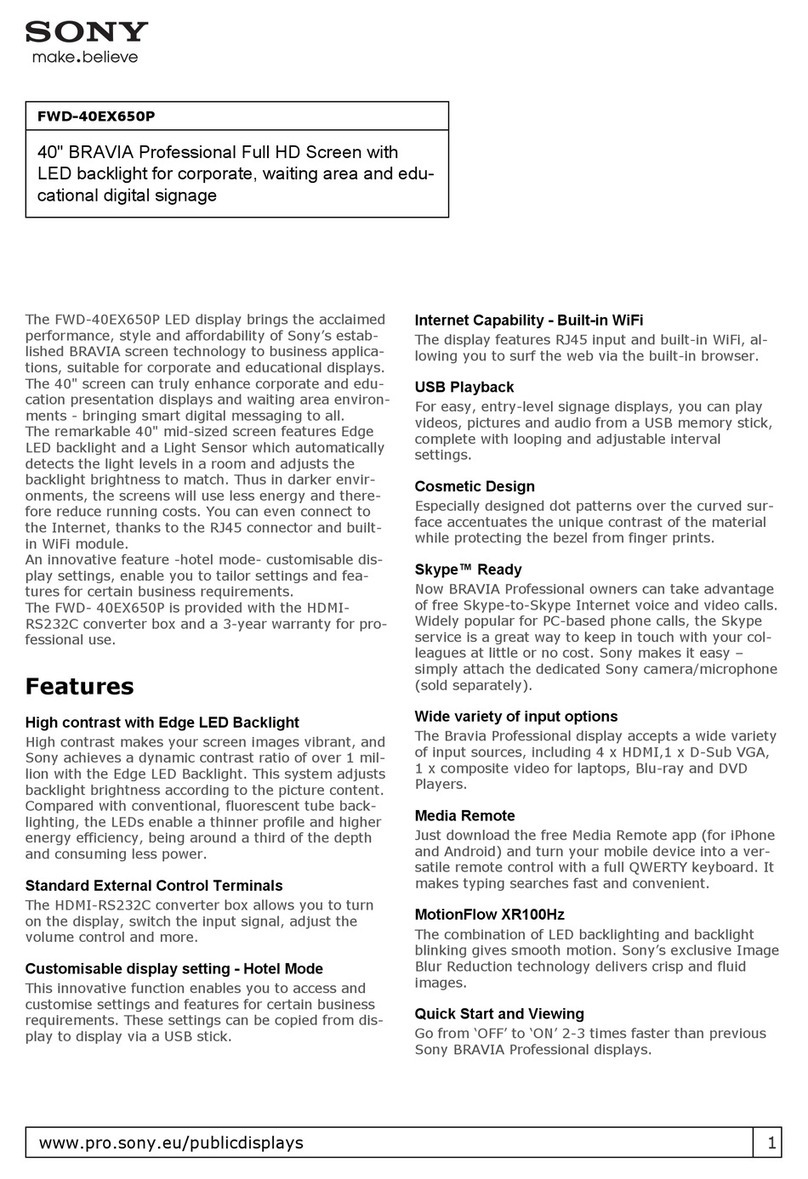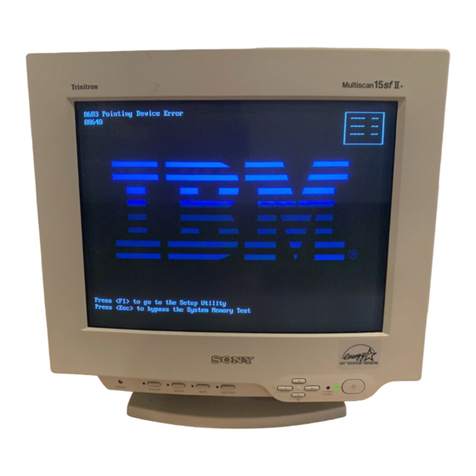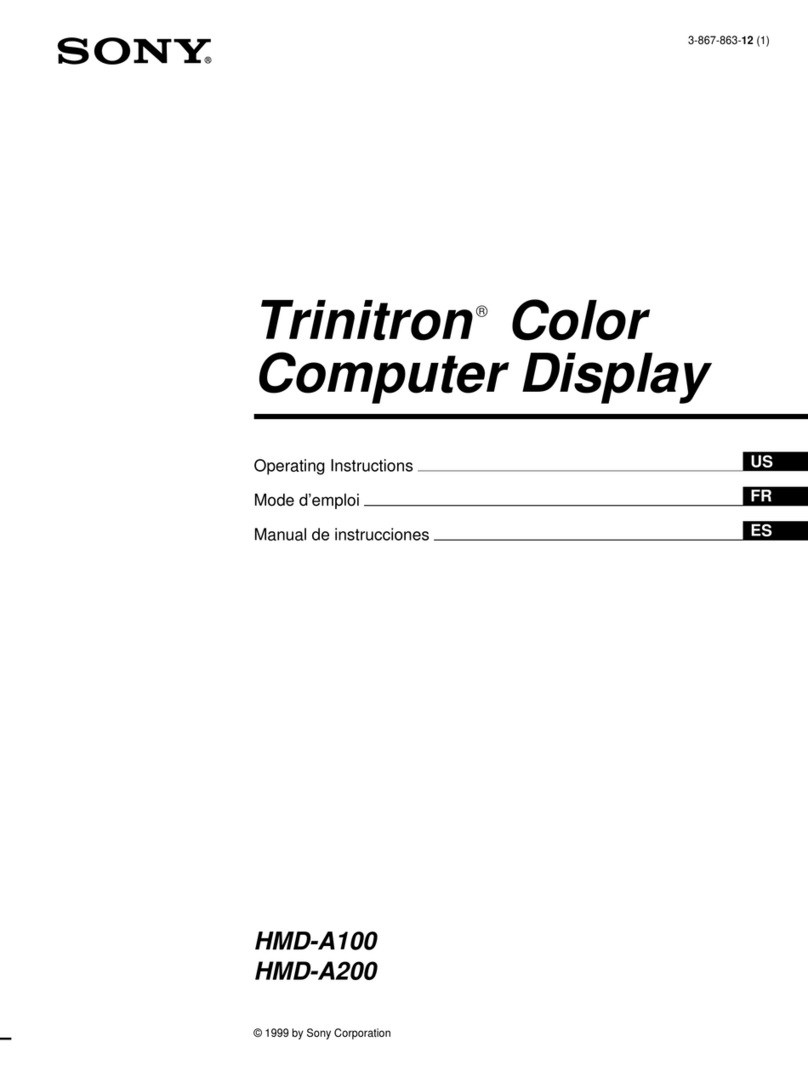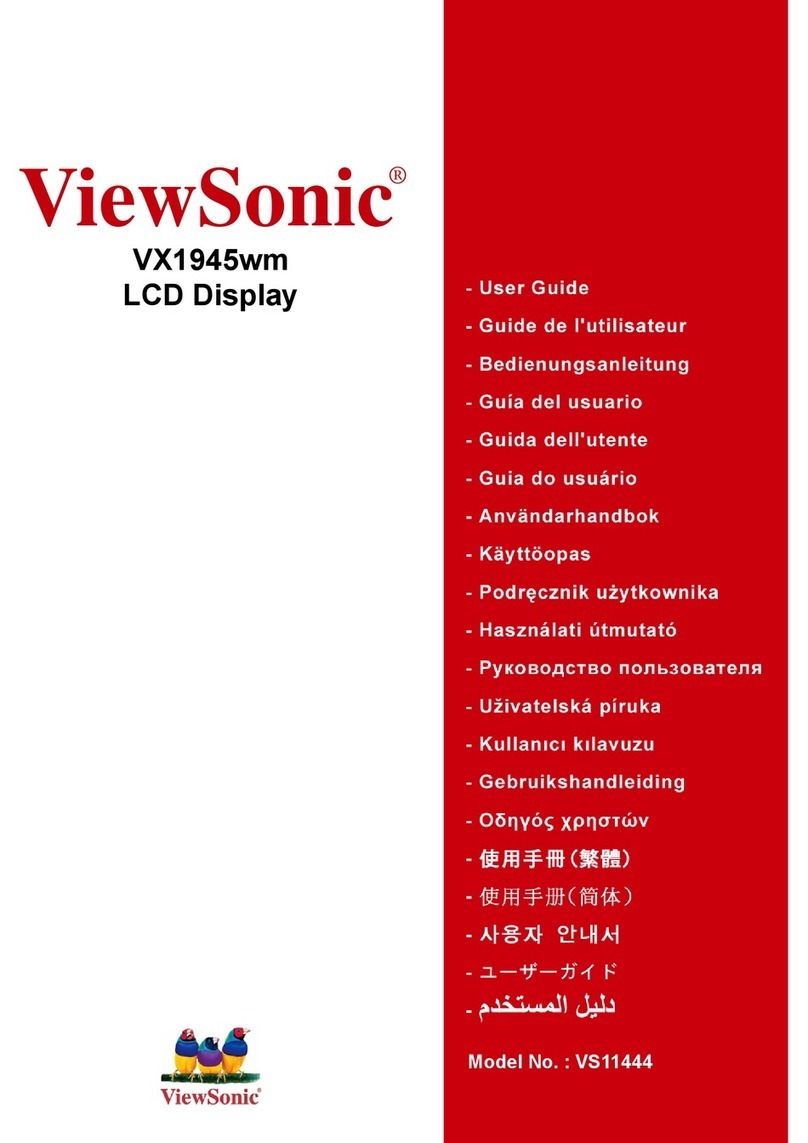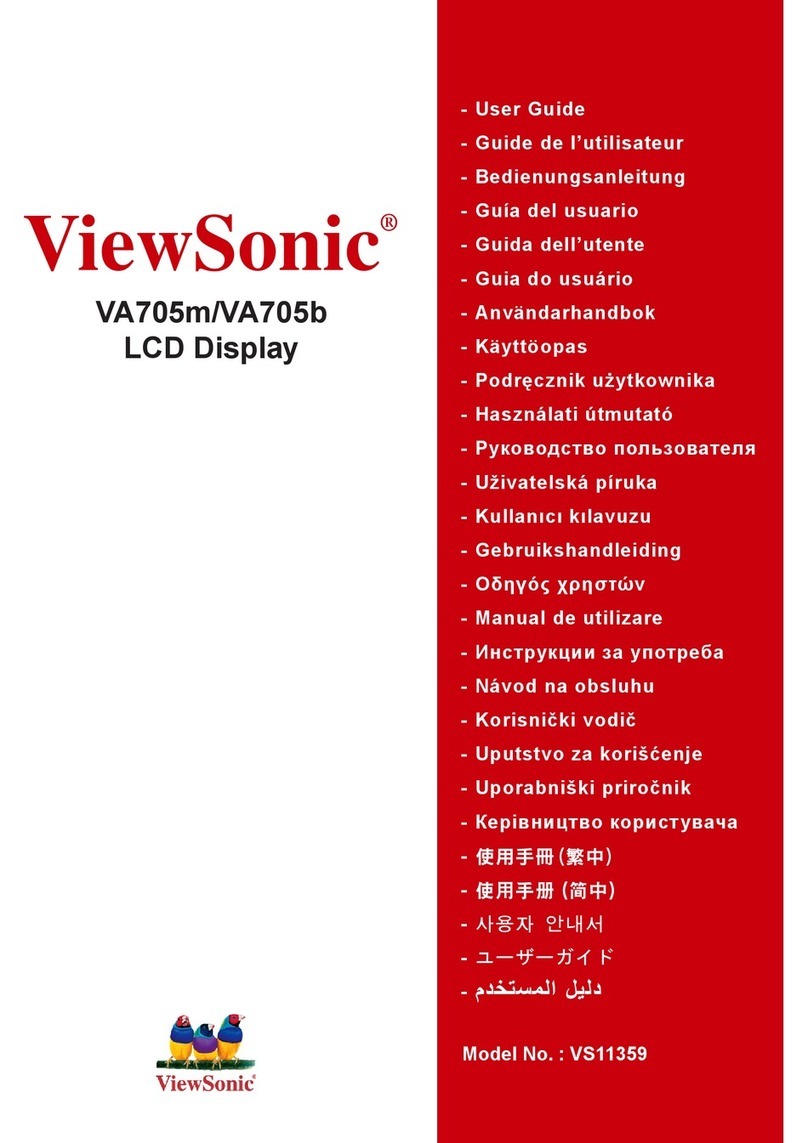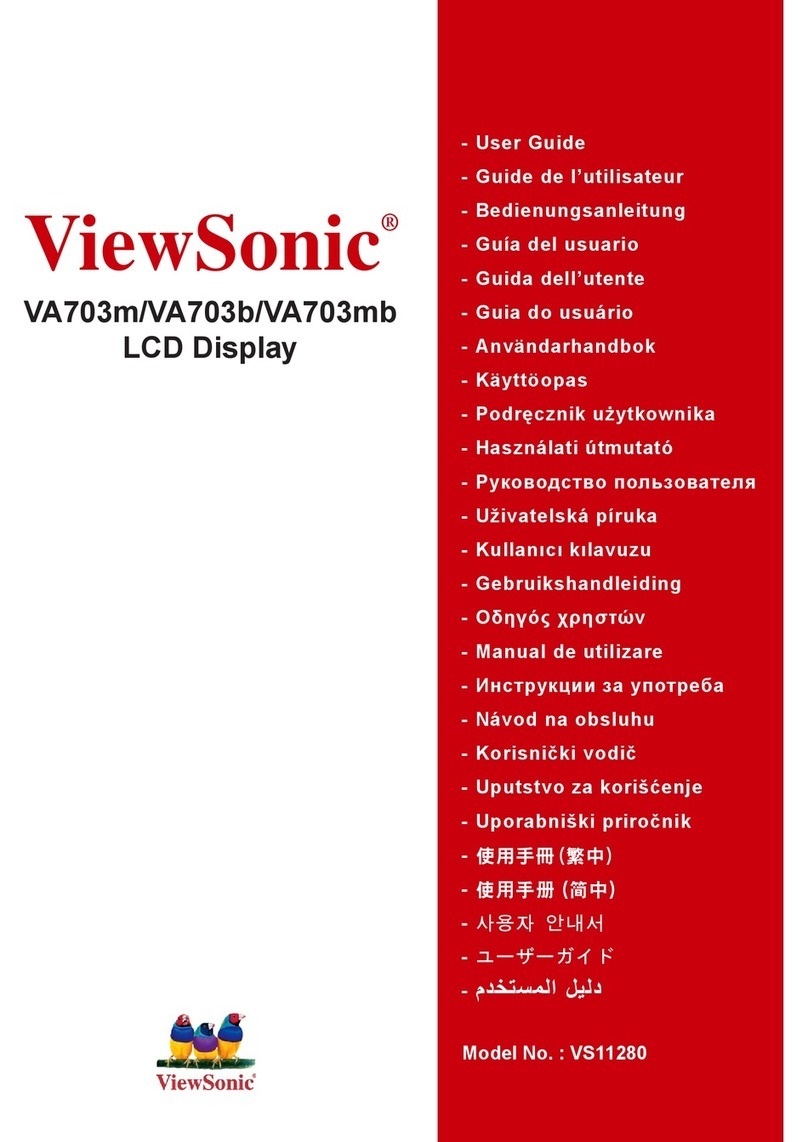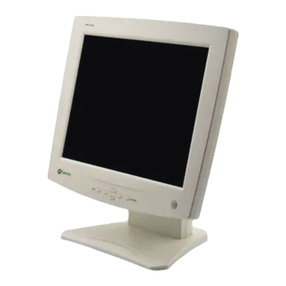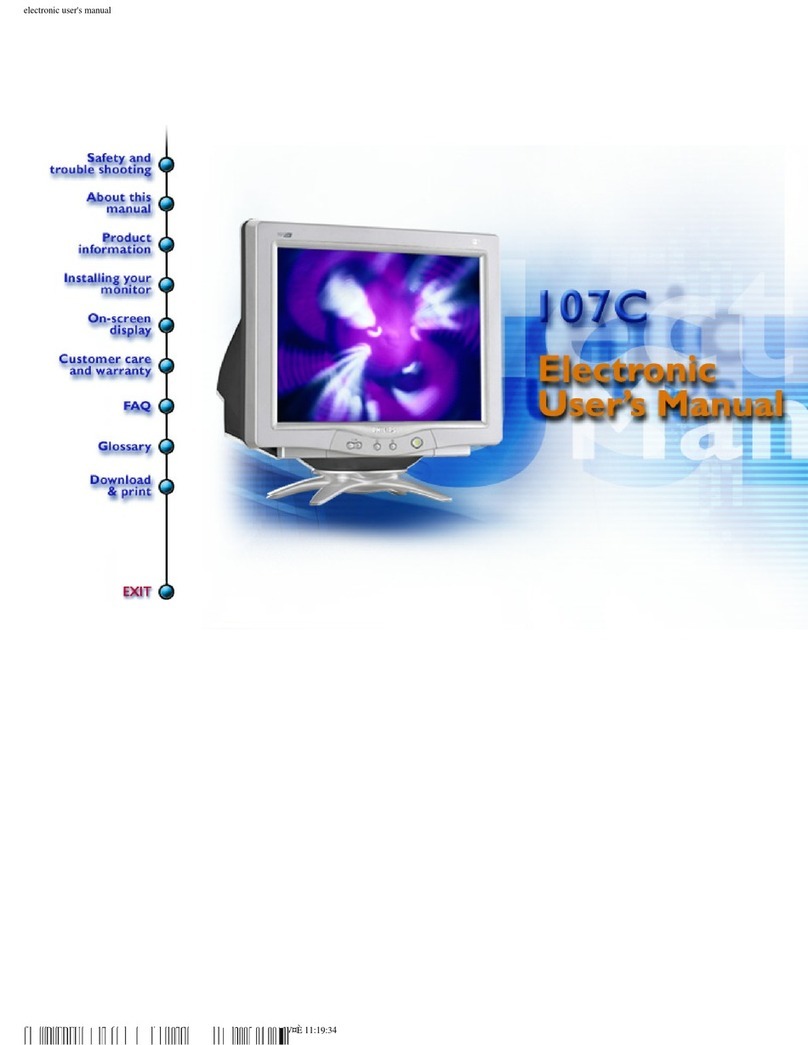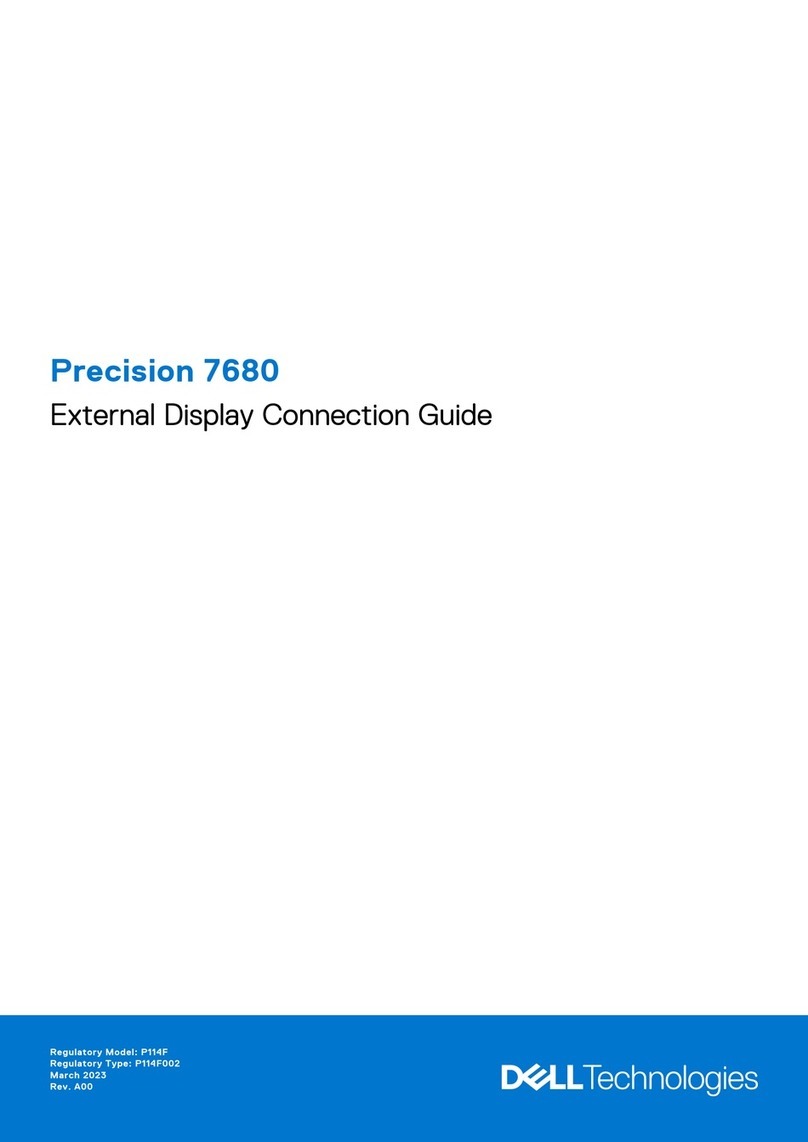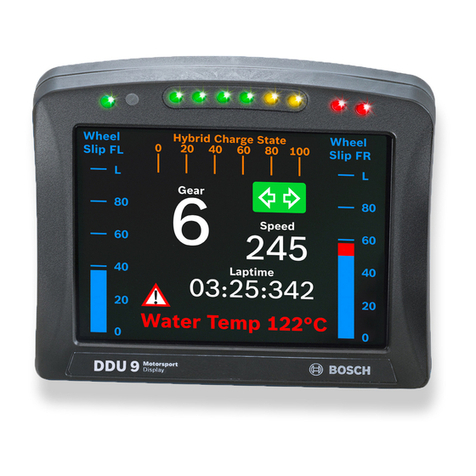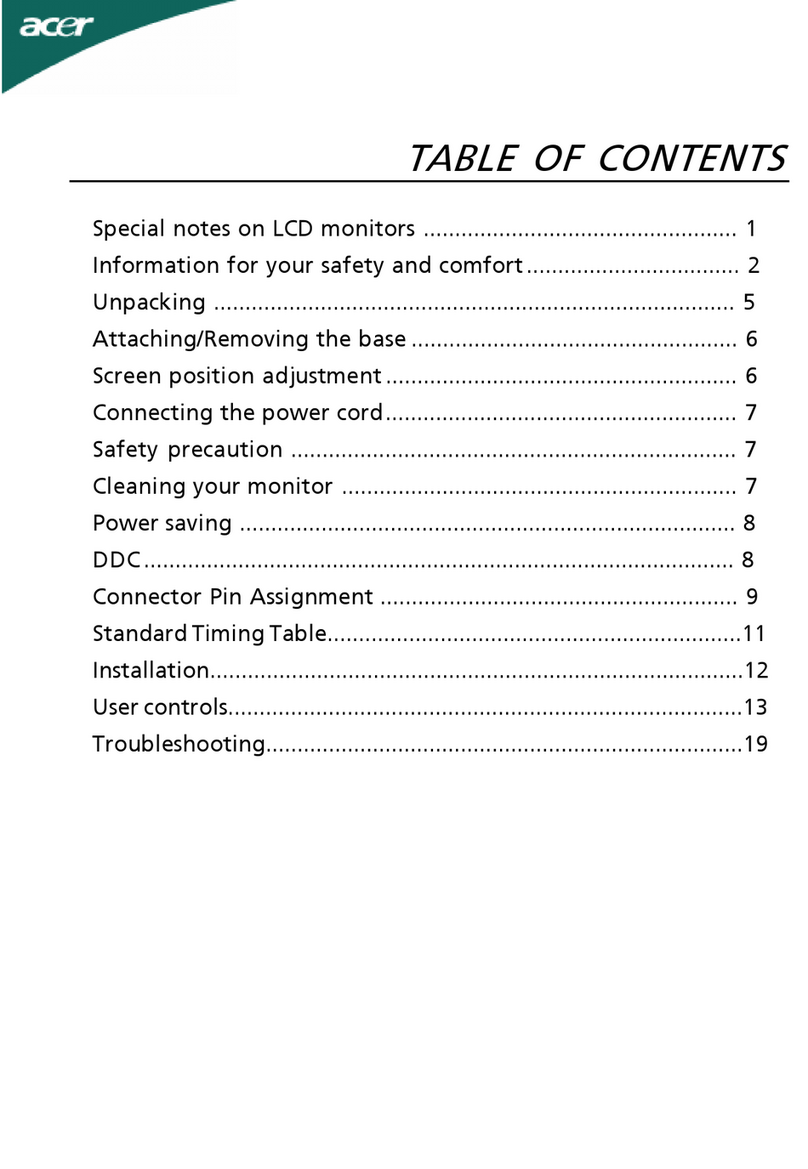
.
:,
'
..
:~
'
..
.
~.
'IIi'
ilH'
"
,'!F
1\:'
•••
iII.~_~~ikalii~~~b!ii.llb,ihi!.\~h~ih'"
~·i.,ilW.l~t~:i:.i;:"'I~'
J~!i"~.iiil;;;;~w'~';l;.,~~i\~H>J~'il~:il~lIiji~~L;;i;.;~,,~,,,.{'~J~.~.::li~.i:(i;~';;"
,;;,;':;,,;,L
:,,'
....
,I
~;.~t~:'1
I CPD-1404S
'_
TABLE
OF
CONTENTS
Section Title -Section Title
1.
GENERAL
4.
SAFETY RELATED ADJUSTMENT···········...............
16
1-1.
Location
and
Function
of
Controls........·
..
·..........·......· 4
1-2.
Connections···········································................. 5
5.
CIRCUIT ADJUSTMENTS
1-3.
Use
of
the
Tilt·Swivel···········································... 6 5-1. DA(DC··I) Board Adjustment
..
··································
19
1-4.
Timing Chart·························································· 7 5-2. D
and
DA(OC-l) Board Adjustments .........................
20
2.
DISASSEMBLY
6.
DIAGRAMS
2-1. Tilt
and
Cabinet Removal
..
········································ 8
2-2. DA(DC-I) Board Removal·····································
..
8 6-1. Circuit Boards Location
..
··································
..
······
23
6-2. Schematic Diagrams and Printed Wiring Boards·...........
23
2-3. Chassis
and
B Block Assembly Removal·
.. ··
................. 9 Frame Schematic Diagram······............................
24
2-4. D Board Removal·
..
·······
..
········································
10
DA(OC-l) Board··············································
26
2-5. Picture Tube Removal········......................................
10
D Board···························································33
B Board···························································40
3.
SET-UP ADJUSTMENTS 6-3. Semiconductors·......................................................
45
3-1.
Beam
Landing························································
11
3-2. Convergence···········································................
12
7.
EXPLODED ViEWS·················································· 47
3-3. Focus Adjustment···············.....................................
15
3-4. White Balance····························............................
15
8.
ELECTRICAL PARTS LIST
'"
...................................
48
3-5.
Bright Controllable Confirmation ...............................
15
NOTE. Parts Difference
AEP
UK
AUS
Serial
No.
5,000,001
to
5,008,000
BEZEL ASS'Y (X-4029-894-1)
(No include AERIAL ASSY)
without CANCEL COIL ASS'Y
Serial
No.
5,800,001
and
later
with BEZEL ASS'Y (X-4029.894-3)
with CANCEL COIL ASS'Y (1-941-843-19)
Serial
No.
5,008,001 and later
BEZEL ASS'Y (X-4029-894-3)
(include AERIAL ASSY)
with CANCEL COIL ASS'Y
( 1-941-843-19)
SAFETY·RELATED
COMPONENT
WARNING
'!
COMPONENTS
IDENTIFIED
BY
SHADING
AND
MARK
.&
ON
THE
SCHEMATIC
DIAGRAMS,
EXPLODED
VIEWS
AND
IN
THE
PARTS
LIST
ARE
CRITICAL
TO
SAFE
OPERATION.
REPLACE
THESE
COMPONENTS
WITH
SONY
PARTS
WHOSE
PART
NUMBERS
APPEAR
AS SHOWN
IN
THIS
MANUAL
OR
IN
SUPPLEMENTS
PUBLISHE'D
BY
SONY.
CIRCUIT
ADJUSTMENTS
THAT
ARE
CRITICAL
TO
SAFE
OPERATION
ARE
IDENTIFIED
IN
THIS
MANUAL.
FOLLOW
THESE PRO·
CEDURES
WHENEVER
CRITICAL
COMPON-ENl'S
ARE
REPLACED
OR
IMPROPER
OPERATION
IS SUSPECTED.
-3-
:"''""':''''''';
"
.-

